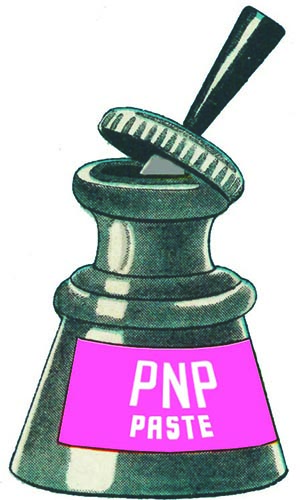We are a nation of excess. Though our portion sizes have yet to catch up to those of North America, it is generally held that we eat too much, own too many things and consume more energy and water than most other nations. We feel that televisions large enough to make the newsreader’s head bigger than our own and four-wheel drives for inner-city living are “necessities”.
However, there are more subtle indicators of our lack of restraint. Imagine a bakery. You are peckish. You enter and examine the goods on display. A lemon tart, perhaps, or a chocolate brownie? A donut—a cronut! A slice of cherry pie, or some other unspecified concoction of pastry, fruit and sugar syrup? Finally you choose and exchange your spondooleys for the delectable item. You raise this sweet delight to your face, to breath in the divine aroma of freshly baked carbohydrate and to take your first, delicious bite.
This is when your lungs suddenly seize up and you are enveloped in a paroxysm of coughing. Death by tempting treat! What an ignoble end, you think—choked by a cannoli, before you even ate any of it. What just happened?
What just happened was that your baked good was encrusted with a highly dangerous substance: icing sugar.
Icing sugar is regular sugar that has been crushed, stomped, pulverized, smashed, ground and generally annihilated to form one of the finest particulates this side of a mould spore. It is used to dust pastries and pies and tarts and cakes to give an extra sweetness or just for looks. So pretty—it is like it has just snowed on your Streuselkuchen! In restrained quantities, this powdered sugar can bind with the fats and oils on the surface of the baked good and poses no real threat to your life, other than the long-term effects of additional calories and eroded tooth enamel.
Yet we so often insist on caking our cakes with a thick layer of this fatal sweetener. As you bite, you also swallow air. As the goodie is so scrumptious, you inevitably try to improve the overall experience by inhaling the scent at the same time. Combined, these factors are your undoing.
Particulates are a highly regulated substance in most workplaces. It doesn’t even necessarily matter what the particulates are; anything small enough to enter your lungs is generally a bad thing. Carpenters and welders and plasterers wear particulate respirators or disposable masks to prevent the inhalation of fine substances. Conservators work in fume cupboards to avoid inhaling mould spores on afflicted objects. Paint and varnish aerosols must be applied in spray booths.
A micron is a millionth of a metre—one thousandth of a millimeter. It is the common unit of measurement for wavelengths of infrared radiation and the size of cells and bacteria. Mould spores range from 10-30 microns, pollens from 10-1,000, and dust mites from 100-300. Cement dust ranges from 3-100 microns, sawdust from 30-600. Asbestos ranges from 0.7-90 microns, coal dust 1-100, automobile emissions 1-150. Icing sugar has an average particle size of about 60 microns, though they may range from 10-250 microns. Hence, icing sugar falls well within the range of Things You Should Not Breathe In. At least it is not generally as fine as anthrax (1-5 microns) or radioactive fallout (0.1-10 microns), which have other complications besides.
And yet we blithely subject ourselves—our children!—to the terrible hazard of icing sugar: sweet death served up on a delicious sticky bun.
Be safe—be sparing with your icing sugar.
A CANNON, MELBOURNE
n case you needed further proof of how dangerous sugar can be, behold Fire at the Victoria Sugar Company’s works, Sandridge, on 8th June. Published by Ebenezer and David Syme, Melbourne, 12 July 1875. Wood engraving, State Library of Victoria, IAN12/07/75/100.


